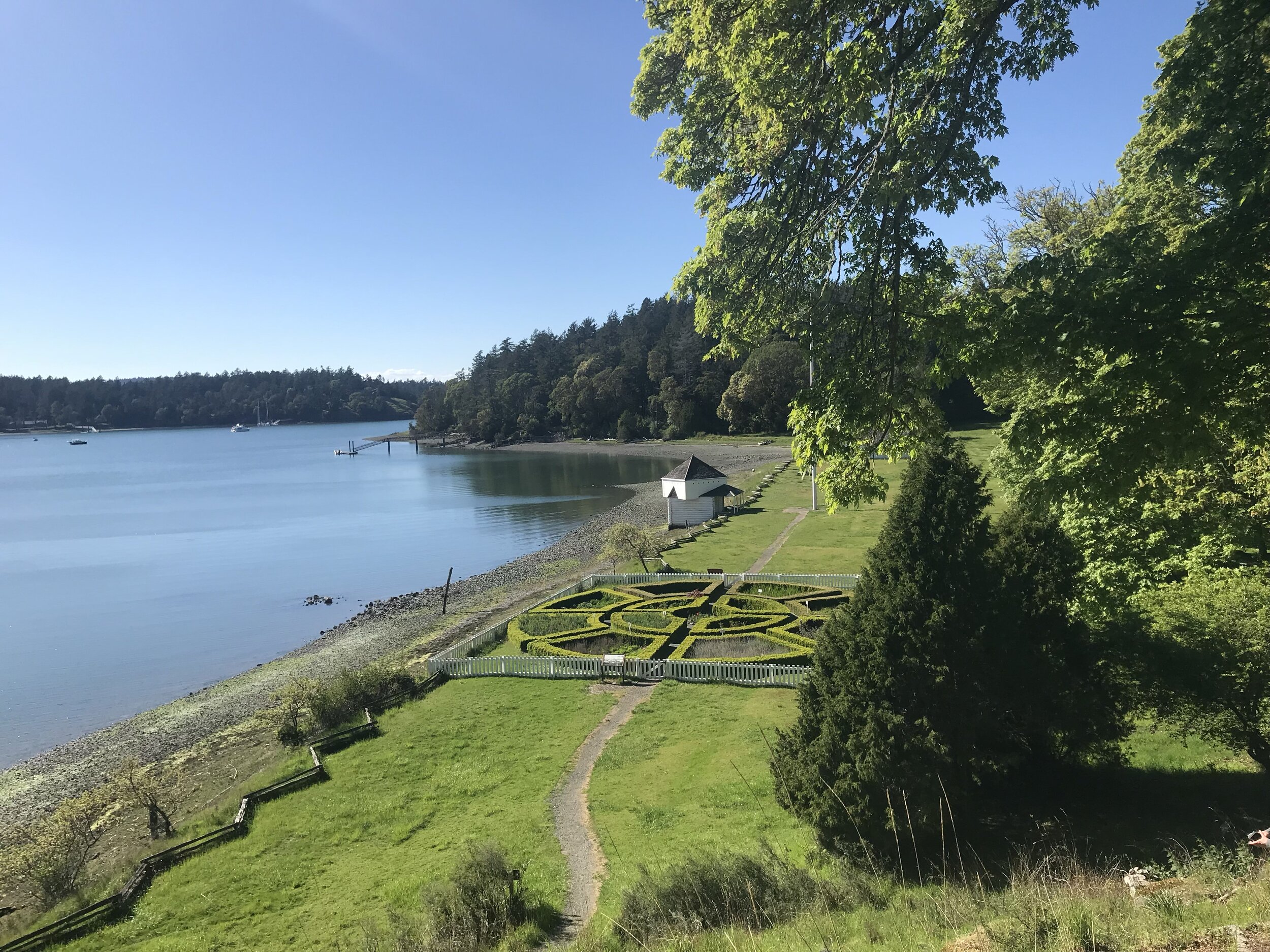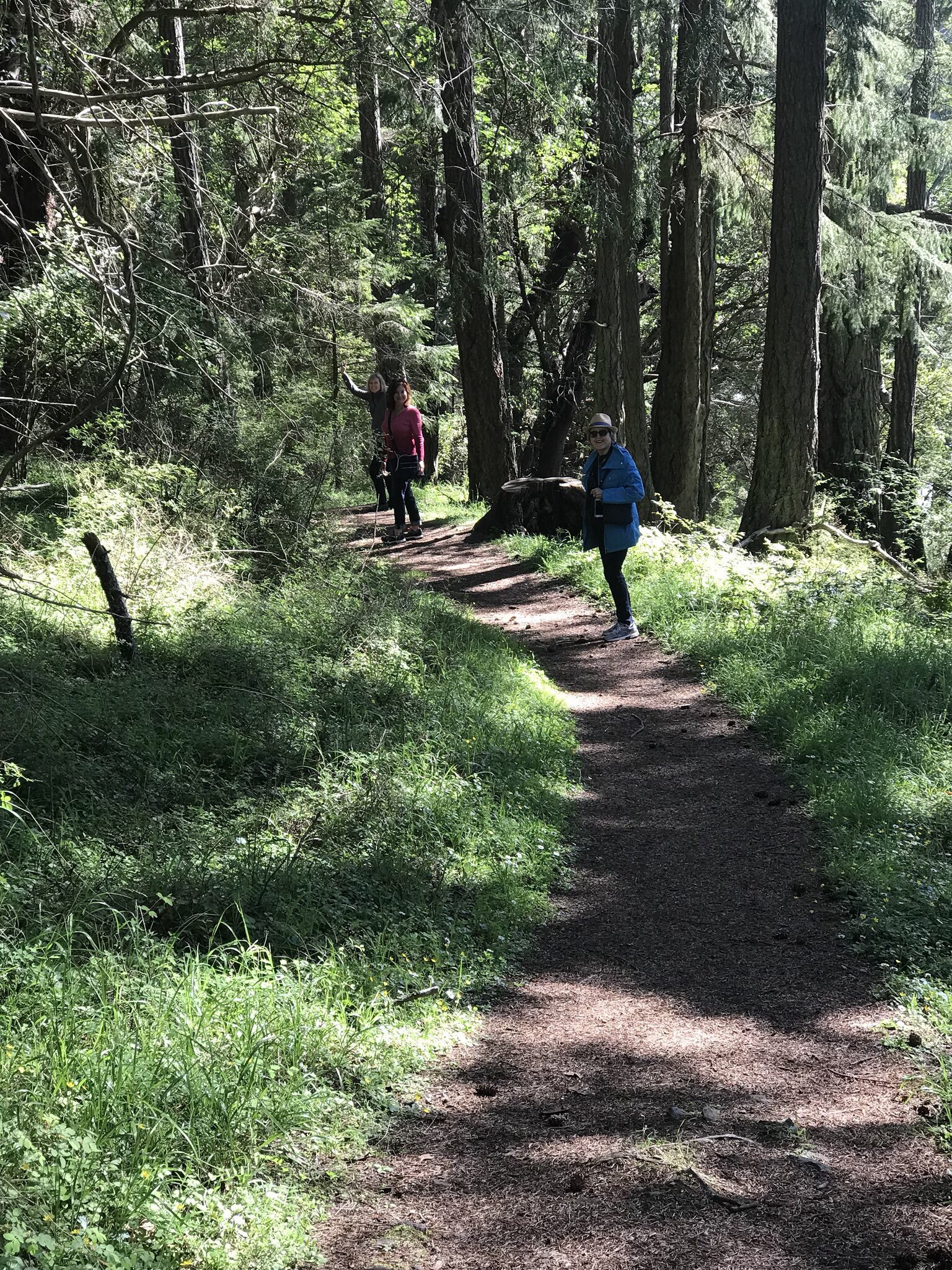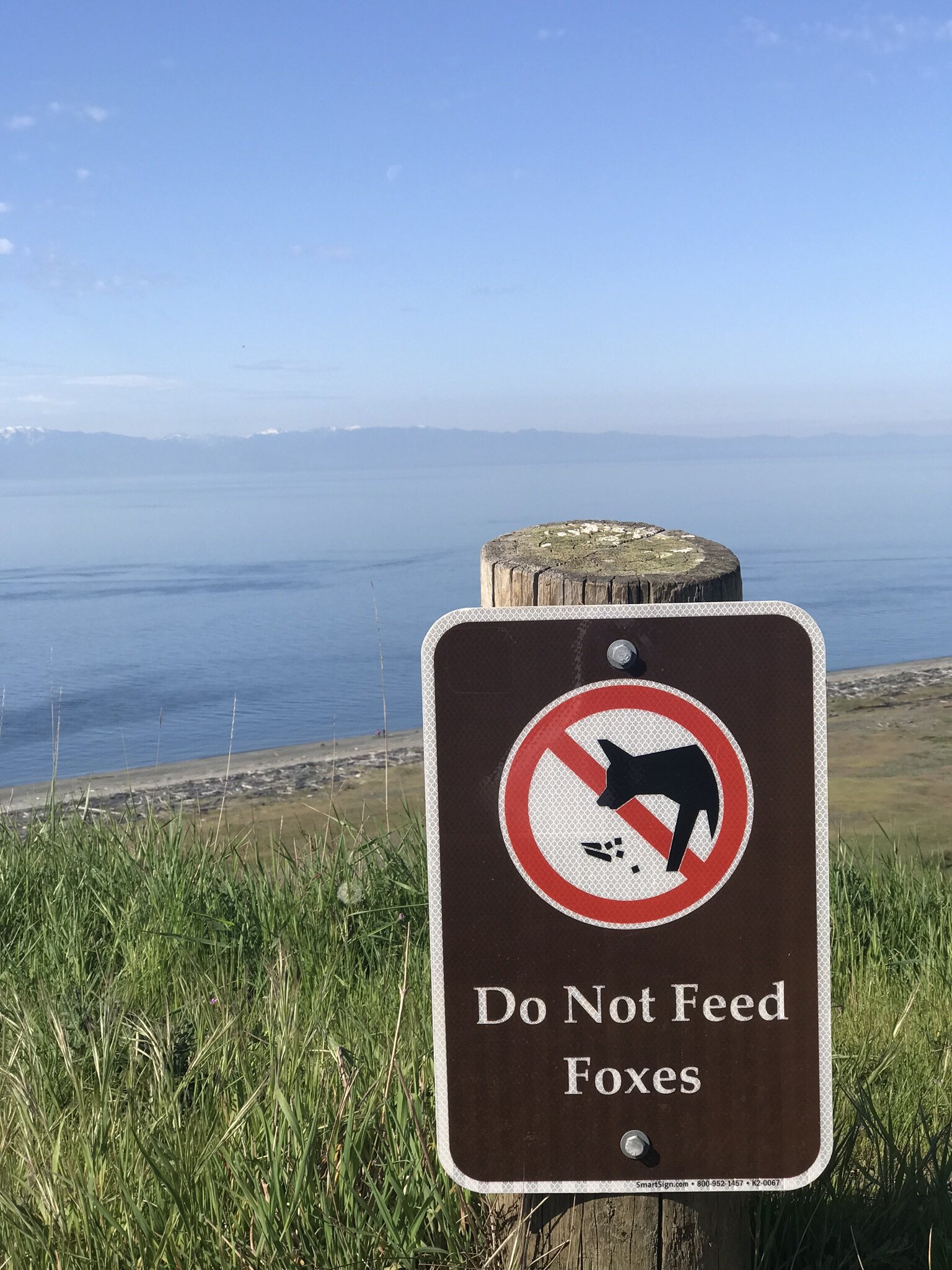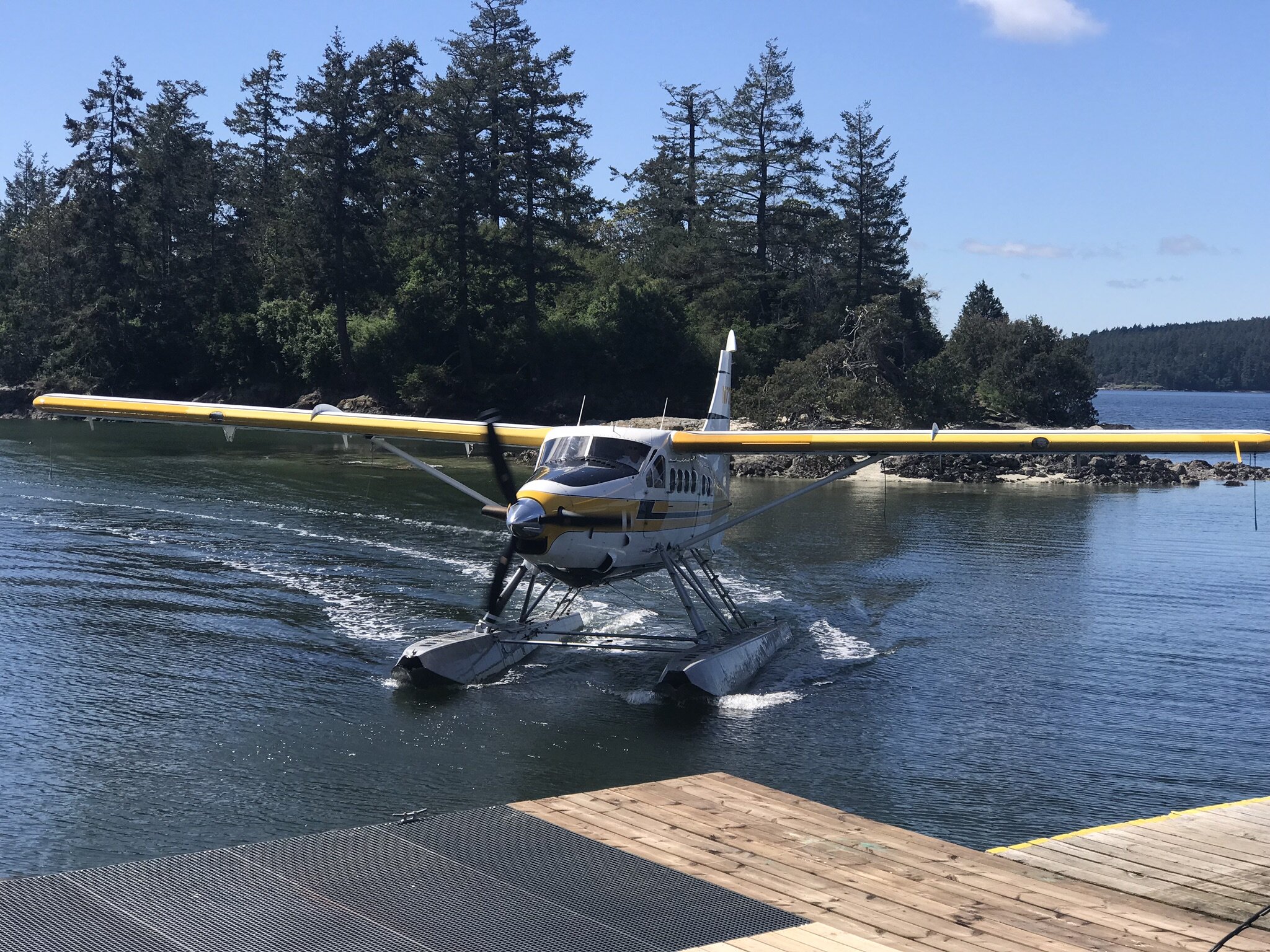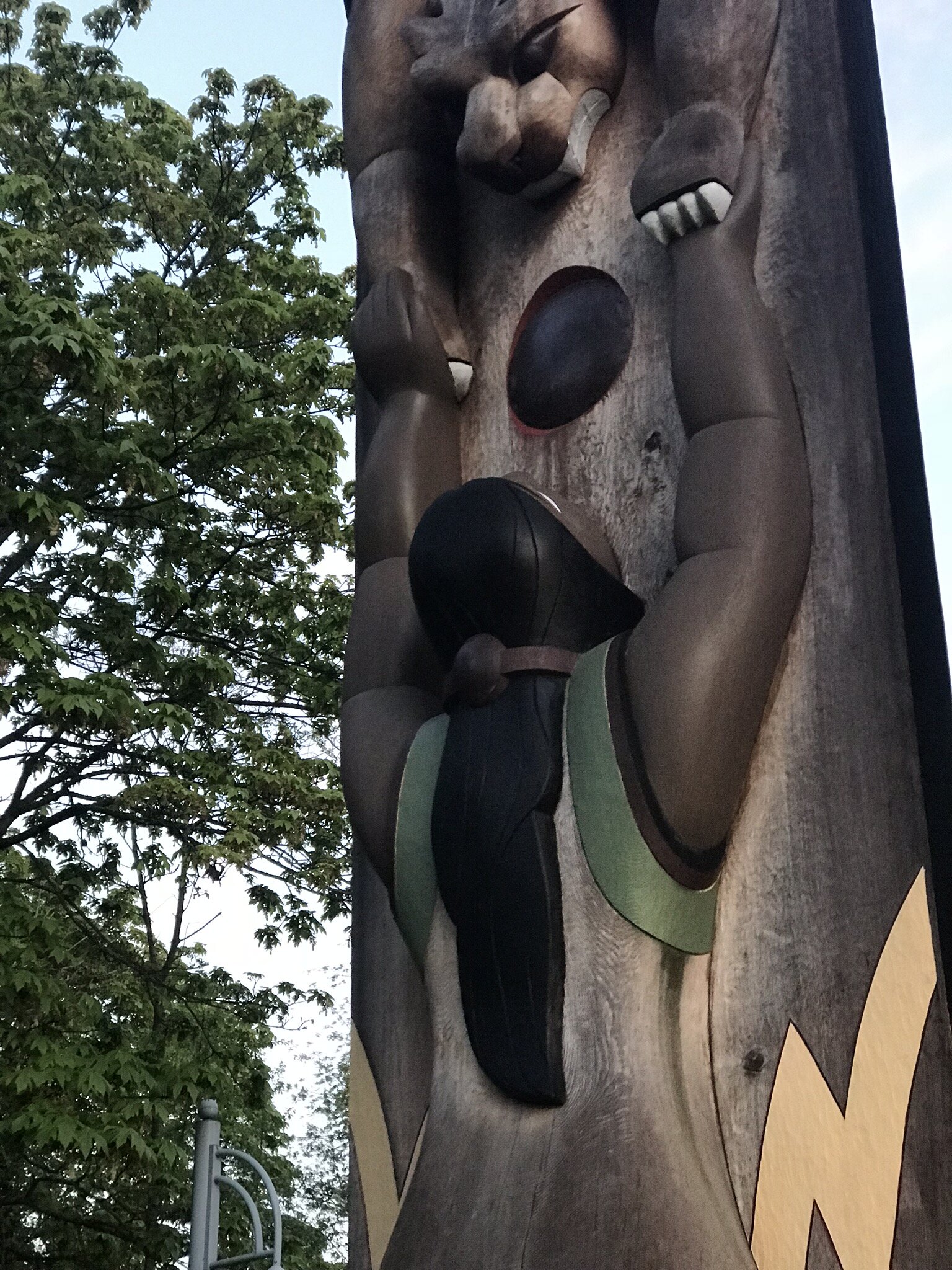Travel in the US: the story of San Juan Island National Historical Park
The only park in the US commemorating a diplomatic resolution to a military dispute demonstrates the ties between nations and provides a chance to tell new stories
Red fox ducking and diving on prairie land, San Juan Island, US (image by John Yunker, courtesy of San Juan Islands Visitors Bureau).
It’s a brisk spring morning on San Juan Island when retired park ranger Mike Vouri returns home from walking his dog.
Mike resigned from his role as historian and chief of interpretation at San Juan Island National Historical Park after 20 years in 2015, yet every day he enters the park to walk his dog and take in the scene.
Today man and dog are trekking South Beach Trail in the historic military area known as American Camp.
Views from the track across the Strait of Juan De Fuca to snow-capped Mt Rainier and Mt Baker are spectacular, even on a chilly five-degree day like this.
Year-round it’s not uncommon to glimpse the black dorsal fins of resident orcas patrolling the strait for Chinook salmon, or to watch red foxes ducking and diving on the park’s prairie land.
For Mike, however, the American Camp trails are best for spotting the spring arrival of the delicate purple native wildflower called Shooting Star.
“These morning walks are special to me,” he explains. “As a ranger I used to hike these trails to keep in touch with visitors, answer questions and talk about the park’s central theme of peace over war.
“Nowadays I come here for reflection and exercise. But the history of the park and what it represents are never far from my thoughts.”
In 1859 San Juan Island became the site of a military dispute between the joint occupying forces of the United States and Great Britain.
In a 12-year stand-off that eventually led to a peaceful resolution brokered by Kaiser Wilhelm I, King of Prussia and Emperor of Germany, San Juan Island – and the other 171 islands that make up the San Juan Islands archipelago – became the territory of the US.
By 1874, both British and American troops had withdrawn from the region. The non-violent battle was finally at an end.
Today, San Juan Island National Historical Park, in Washington State, stands as the only historic park in the US commemorating diplomacy and peaceful resolution over war.
English Camp, San Juan Island, US (image by Jacqui Gibson).
“Look, it’s an extraordinary story,” says Mike, a Vietnam War veteran who’s authored two books on the island’s military history and frequently gives public lectures and walking tours on the topic.
“First, you have the cause of the dispute – an American settler shooting a pig running loose in his potato patch, belonging to the British. That’s the part that hooks people in. Kids just love it.
“Then, before you know it, there are threats of arrest and eviction from the British. The US infantry is called in and 400 Royal Marines and three armed warships turn up in the harbour.
“The whole thing escalates into what became known as the Pig War, and you see the establishment of English Camp and American Camp at either end of the island to keep the peace.”
In 1966 an Act of Congress was passed to create San Juan Island National Historical Park and preserve the two historic campsites.
Mike says: “The park is proof that sometimes individuals and nations can resolve their differences peacefully, without resorting to violence. Think about it: it was set up at the height of the Vietnam War, signed off by the President of the US. Peace was as important then as it is now. To me, that’s the true meaning of the park. That’s the crux of it.”
Historic remnants of American Camp include the parade ground and the officers’ and the laundresses’ quarters. A white picket fence bordering the parade ground was installed in 1993.
At English Camp, located in the northwest of the island at Garrison Bay, there are original military buildings, such as the barracks, blockhouse and commissary, plus the parade ground and a formal English garden. Both camps include a visitors’ centre with staff and further information.
One of the biggest challenges facing the park today, says Brandon Cadwell, Chief of Visitor and Youth Engagement, is promoting the park’s unique story.
“The history of San Juan Island, particularly the Pig War, is completely unknown to the average citizen in the United States. There’s just so much happening on phones and in the news. It can be hard to catch people’s attention and break through.”
And while tourism in San Juan Island is on the rise, says Brandon, most people come to see wildlife such as orca, go camping and unwind. Military history isn’t high on their ‘must do’ lists.
That’s why the park became part of the island’s History Lives Here festival in May, a month-long celebration of the island’s heritage with public talks, guided walks and special events.
In July the park itself will run the three-day annual Encampment event at English Camp to highlight the park’s message of peace over war.
Year-round, park staff are involved in community outreach and school education programmes.
Finding funding for ongoing maintenance, interpretation and education is another challenge, says Brandon.
“We’re administered under the US National Park Service and funded on a yearly basis. For the past decade though, the US legislative branch has passed resolutions hampering the flow of funding and, as a result, our ability to undertake long-term care of the park.”
In 2010, for example, a national, non-profit environment fund (The Conservation Fund) was tapped to conserve the southern border of English Camp, preserving a five-kilometre track network and a remnant of the 19th century military road linking English Camp and American Camp.
Three years later, it was used again to help buy a privately owned, 13-hectare property near Westcott Bay and expand the border of English Camp.
In New Zealand, the country’s important military sites face their own challenges, says Ministry for Culture and Heritage Senior Historian and Educator Steve Watters.
Responsible for education programmes at Wellington’s Pukeahu National War Memorial Park, Steve says in Pukeahu’s case the challenges are less to do with funding and more to do with education and interpretation.
Opened in 2015, the park incorporates the National War Memorial and plays a central role in national events such as New Zealand’s annual Anzac Day commemorations.
“It’s popular, which is fantastic,” he says. “But I’m not sure everyone who comes here fully understands the layers of meaning wrapped up in this place or even if it matters.”
The park officially commemorates more than 30,000 New Zealanders who died in conflict and honours all who have served in war.
Memorial art and sculpture feature throughout the park to demonstrate military ties between nations and highlight the relevance of the site itself.
For example, a garden called Ngā Tapuwae o te Kāhui Maunga illustrates the site’s long association with Te Ātiawa, the iwi that holds mana whenua (indigenous territorial rights) over Wellington.
But as yet, signage throughout the park is limited, online information is basic and there are no walking tours of the park for visitors keen to better understand what each element of the park represents and why.
“To me, that’s something we could definitely do differently – imagine if there were free, twice-daily walking tours of the site. When I bring school kids here, we wander through the whole park. Then I prompt them to look around and think about whose stories are told here and whose aren’t.
“I say to kids: ‘In a place like this, where are the voices of the conscientious objectors and the pacifists? If this is a place that commemorates war – should we also have a designated place within it to protest war?’.
“I don’t know the answers. But in my opinion our military memorials and parks should act as springboards to asking bigger questions and exploring other narratives.”
“... our military memorials and parks should act as springboards to asking bigger questions and exploring other narratives”
Dr Julie K Stein, US archaeologist, author and Executive Director of the Burke Museum of Natural History and Culture in Seattle, couldn’t agree more.
In 2000 she published a book called Exploring Coast Salish Prehistory: The Archaeology of San Juan Island based, in part, on excavation work she had led and carried out at English Camp in the 1980s.
Archaeological evidence from Julie’s work and the work of others shows that the Native American Coast Salish people occupied both English and American Camps more than 2500 years ago.
These days Julie offers walking tours of San Juan Island National Historical Park to introduce people to the park’s Native American history and geology.
“Most people still don’t realise Native Americans lived here or that they settled in exactly the same places as those early settlers.
“When I talk to people I like to emphasise how successful and innovative they were to thrive in places like San Juan Island.
“People need to know contemporary Native Americans are still alive today. They’re part of this place and for them this land remains sacred.”
In 2016, when the park turned 50, Lummi and Saanich people gifted the park a reef net captain totem pole, two salmon storyboards and two cedar-strip canoes in recognition of their ancestral claim to the island. Today the pole and story boards are installed on the foreshore of English Camp.
Dr Michelle Horwood, Heritage New Zealand Heritage Listing Manager, says military parks in New Zealand are also looking at ways to better express the country’s Māori history and culture.
“These parks give us a powerful way to keep our military history alive. But today they also provide a chance to broaden the narrative, reinterpret events and tell new stories.”
She says the reconstructed pā and pou at Rangiriri to commemorate the 1863 Battle of Rangiriri, a major conflict of the Waikato invasion by British forces, is a case in point.
“Heritage New Zealand worked with a wide range of people to develop that site – from Waikato and Tainui iwi to Fletcher Construction and the NZ Transport Agency.
“Having iwi involved from the outset meant we developed a space that reflects and protects the ideas of the Māori chief Tāwhiao, a key figure at the time. It means we can look back at that event from the past and see it from more than one perspective.”
SAN JUAN ISLAND NATIONAL HISTORICAL PARK: TIMELINE OF EVENTS
1846 | Treaty of Oregon divides the possessions of the British Empire and the US. The nations agree to hold the San Juan Islands in dispute until resolution.
1850s | Settlement of San Juan Island by English and American farmers.
1859 | Pig War begins a period of non-violent conflict between the English and the Americans. American Camp and English Camp are set up on San Juan Island to keep the peace.
1871-72 | Kaiser Wilhelm I, King of Prussia and Emperor of Germany, rules that the San Juan Islands belong to the US. Treaty of Washington is signed by Britain and the US to settle various land disputes, including the dispute over the San Juan Islands.
1872 | Royal Marines withdraw from English Camp.
1874 | US troops withdraw from American Camp.
1966 | San Juan Island National Historical Park is created to preserve the historic army campsites of San Juan Island.
1940-90s | Archaeological excavations on San Juan Island reveal evidence of Native American Coast Salish occupation dating back thousands of years.
2016 | San Juan Island National Historical Park commemorates its 50-year anniversary (the day the US National Park Service celebrates its centennial). A Native American totem pole, storyboards and canoes are dedicated to English Camp by members of the Lummi and Saanich nations, recognising their ancestral claims to the land.
This story was first published in Heritage New Zealand magazine.


